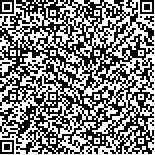|
|
|
| |
|
|
| 本文已被:浏览 495次 下载 635次 |

码上扫一扫! |
|
|
| 中国东海倪氏异冒藻(Heterocapsa niei)的超微形态结构及其分子特征 |
|
冷天泽1, 顾海峰2, 王瑞芳1,3, 郭卓然1, 陆斗定1, 戴鑫烽1
|
|
1.自然资源部海洋生态系统动力学重点实验室 自然资源部第二海洋研究所 浙江杭州 310012;2.自然资源部海洋生态保护与修复重点实验室 自然资源部第三海洋研究所 福建厦门 361005;3.浙江大学海洋学院 浙江舟山 316000
|
|
| 摘要: |
| 异冒藻属(Heterocapsa)包含多种可致有毒有害赤潮的物种, 其中2019年在福建近海赤潮中分离的倪氏异冒藻(Heterocapsa niei)被证明有毒, 然而对其超微形态结构, 特别是对作为该属重要的分类保守特征的体鳞, 研究还不充分。利用多种形态学方法和ITS片段分析了从厦门湾附近分离的藻株(SIO-H3), 形态学和遗传学结果都显示该藻株属于倪氏异冒藻。其细胞呈双锥形, 长14.3~18.2 μm, 宽8.4~10.9 μm, 甲板方程式为Po, cp, 5′, 3a, 7″, 6c, 5s, 5″′, 2″″。同时, 发现了两个与之前描述不同的形态特征, 该藻株细胞具有多个蛋白核(pyrenoid)和两种形态体鳞(body scale): 一种体鳞基底层(basal layer)为粗网状纹, 上层中心处有一长中心刺(central spine)向上立起, 中心刺所在位置等长向外辐射三根中心脊(central ridge), 中心脊末端有三根直立的次长外围刺(sub-peripheral spine); 另一种体鳞有三层结构, 其中基底层为致密网状纹, 并有三个次中心孔(sub-peripheral pore), 中层和顶层各有一三叉中心脊。该研究改变了异冒藻分类研究中一种异冒藻对应一种体鳞结构的观点。 |
| 关键词: 异冒藻 体鳞 蛋白核 赤潮 分类学 |
| DOI:10.11693/hyhz20230400084 |
| 分类号:Q948 |
| 基金项目:国家自然科学基金,42276131号,41876139号;中央级公益性科研院所基本科研业务费专项资金项目,JG2108号;宁波市自然科学基金,2022J195号 |
|
| ULTRAMORPHOLOGICAL AND MOLECULAR CHARACTERS OF HETEROCAPSA NIEI (DINOPHYCEAE) FROM THE EAST CHINA SEA |
|
LENG Tian-Ze1, GU Hai-Feng2, WANG Rui-Fang1,3, GUO Zhuo-Ran1, LU Dou-Ding1, DAI Xin-Feng1
|
|
1.Key Laboratory of Marine Ecosystem Dynamics, Second Institute of Oceanography, Ministry of Natural Resources, Hangzhou 310012, China;2.Key Laboratory of Marine Ecological Conservation and Restoration, Third Institute of Oceanography, Ministry of Natural Resources, Xiamen 361005, China;3.Ocean College, Zhejiang University, Zhoushan 316000, China
|
| Abstract: |
| The genus Heterocapsa includes several toxic or harmful bloom-forming species, among them Heterocapsa niei was recently isolated from a harmful algae bloom off the coastal water of Fujian, SE China, and has been proven toxic. However, its ultrastructure, especially the body scale, the important taxonomic feature of the genus Heterocapsa, has not been well studied. A strain (SIO-H3) isolated from the Xiamen Bay in Fujian was analyzed using morphological methods along with phylogenetic analysis based on internal transcribed spacer (ITS) gene sequences. Both the morphological and molecular results show that the strain (SIO-H3) was H. niei. Its cell had a biconical shape in length of 14.3~18.2 μm and width of 8.4~10.9 μm, with a plate formula of po, cp, 5′, 3a, 7″, 6c, 5s, 5″′, 2″″. Unlike previous descriptions, the cells had several pyrenoids and two different types of body scales. One has a rough reticulate pattern in basal layer with a central spine standing upward in the top layer center, and three central ridges radiating outward in equal length from it. There are also three sub-peripheral spines standing upward at the end of each central ridge. The other one features a three-layered structure with a dense reticulate pattern in the basal layer with three sub-central pores and trigeminal central ridge in the middle and top layers. This study corrected previous view in the taxonomic study of Heterocapsa that one species corresponds one type of body scale structure. |
| Key words: Heterocapsa body scale pyrenoid harmful algae taxonomy |
|
|
|
|
|
|
